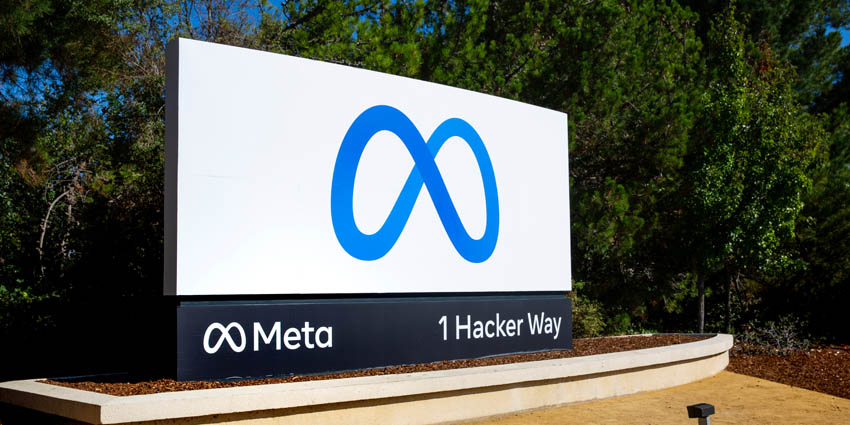Long before the 2024 Meta Connect event, rumors were already circulating about an upcoming pair of Meta AR glasses, unlike anything we’ve seen on the market before. Meta has made it clear that it’s not just focusing on virtual and mixed reality with it’s Quest portfolio.
For some time now, the company has been exploring the smart glasses space, with options like the Meta Ray-Ban glasses. However, until now, the tech giant has failed to produce a pair of true “augmented reality” specs.
Finally, at Connect 2024, Meta showed the world what these glasses might look like – but there’s a catch. The Orion glasses demoed at the event are only a prototype, available to a select few developers and Meta insiders.
In their current form, these glasses will likely never be available to the public – but they do give us an insight into what a future set of consumer-grade Meta glasses might be able to do.
Meta AR Glasses: The Journey So Far
Meta isn’t just jumping on the augmented reality bandwagon now. The company has been experimenting with AR tech for a while. In 2021, Meta teased its “Project Nazare” glasses, which were set to become the company’s first full-featured augmented reality glasses.
In an interview in 2023, Meta’s CTO Andrew Bosworth spoke extensively about a set of AR glasses used internally by Meta’s team. He described them as the company’s most exciting prototype but noted that the glasses were “prohibitively expensive” to make.
Since then, rumors have been circulating about a new Meta AR Glasses project, code-named “Project Orion”, which may represent an evolution of Project Nazare.
For months, most rumors about these glasses were based on speculation and occasional hints from Meta’s team, like Mark Zuckerberg posting a picture of him surrounded by AR specs.
However, in a video interview released in July, Zuckerberg confirmed that a prototype is almost ready to be shown to the public. We finally saw that prototype in action at Meta Connect 2024. Promising a truly unique immersive experience, these spatial glasses combine augmented reality, EMG capabilities, and integrated AI – but they’re not available to the public.
Meta AR Glasses Pricing: How Much Will They Cost?
Although Meta revealed its AR Glasses at Connect, it is not actively selling them—in fact, it probably never will. Meta described the glasses as one of its most advanced prototypes to date. They will be used as a baseline to help Meta develop a future set of consumer glasses.
It is still uncertain how much those glasses will cost and when they’ll be available. Right now, these specs are incredibly expensive to create—about $10,000 per unit. However, Meta has said that it’s working on making the glasses a lot cheaper.
When Mark Zuckerberg first introduced the “Orion Project” he said one of the core objectives was to make these glasses more affordable to the public. Ideally, that would mean they’d retail for a similar price to the Meta Ray-Bans (around $300) – but that’s unlikely.
The glasses’ advanced functionality (more on that in a minute) means that if Meta wants to deliver anything similar to the Orion prototype specs to the public, it will need to be more expensive. Even CTO Andrew Bosworth has said that they’re unlikely to be as cheap as the Quest 3S or even the Quest 3.
The price is likely to be similar to that of the XReal Air 2 Ultra ($700) or closer to the price of a high-end smartphone (around $1,000).
What will the Glasses Look Like? Design Insights
The Meta AR glasses showcased at Connect 2024 look pretty similar to the “leaked” images that circulated throughout the year. They look similar in design to products like the RayNeo X2 AR specs.
Meta has said it wants the glasses to look and feel like a standard pair of eyeglasses. Right now, the prototype seems a little chunky, but that does make sense. After all, Meta is packing a lot into a tiny frame, such as seven cameras, speakers, and enough computing power that you won’t need to keep them connected to your smartphone at all times.
The company is working on making the device “sleeker” before it’s released to the public. Already, it’s made some great design choices for the prototype. The current Orion glasses feature silicon carbide lenses for a lightweight design (and a massive field of view). They’re also built with a simple magnesium frame, reducing weight to around 98g.
Plus, Meta has introduced a power-efficient proprietary silicone system to help minimize the risk of the glasses overheating, which is a nice touch. However, it’s difficult to know if this will be a feature in the Meta AR glasses for consumers.
Meta AR Glasses: Display and Interactivity
Again, we can only base what a future pair of Meta AR glasses will deliver in terms of display quality and interactivity on the current prototype. We know the current specs feature a set of dual processors, including one designed by Meta Reality Labs. They also offer a fantastic 70-degree field of view.
That field of view is a lot higher than you’d get from something like the XReal Air 2 Ultra glasses. The resolution of the glasses (for your digital content) is uncertain. However, Meta has shared that its using intuitive waveguides to help evenly spread light across your vision. The included projectors also feature uLED technology for exceptional clarity.
The lucky few who got to test the Meta AR glasses at the event said the images were excellent, but it remains to be seen whether Meta will have to make cutbacks to create a set of specs affordable enough for the consumer landscape.
Meta’s approach to interactivity with these specs seems interesting too. The current prototype glasses have an EMG wristband for enhanced gesture control and hand-tracking. The wristband can detect the tiniest movements in your wrist, allowing you to interact with content, even when the specs’ cameras can’t see your hands directly.
The prototype also includes integrated cameras for enhanced body tracking and microphones for interacting with an AI assistant using your voice. However, I think it’s likely that the wristband shown with the prototype won’t be bundled “as standard” with a consumer pair of specs. Meta will probably offer this as an “accessory” and allow users to rely on the other interactivity options (hand and voice tracking) for a lower cost.
The Potential Specs and Feature Set
Even after demoing the Orion specs at Connect, Meta hasn’t revealed a comprehensive “specs” list for its glasses. It shared a little information. For instance, the glasses have seven integrated cameras, speakers, and a microphone. They also include a custom eye-tracking system powered by miniaturized cameras.
The prototypes are also truly “wireless” glasses – which is important. They come with a pocket-sized puck, which powers SLAM features and AR graphics rendering. You don’t need to keep the puck connected to your glasses either. They have their own dual processors, which enables low-latency graphics rendering, eye and hand tracking.
What you’ll be able to do with the Meta AR glasses when they’re finally released for the public is uncertain. We know the prototypes enable hands-free calling, and Meta is working on dedicated AR apps for its Horizon store.
Plus, AI is likely to be a big part of these specs. Meta has already integrated its own AI system into the prototype Orion glasses. This AI functionality gives you an assistant you can interact with at all times. It can also help you multitask with floating windows, look at what you’re seeing in the world around you, and share insights.
At the very least, consumers should expect to be able to do everything with AI they can already do on the Meta Ray-Ban glasses (and then some). Plus, we should benefit from a highly immersive augmented reality experience.
What We Want: Hopes and Predictions
Meta’s Orion demo was illuminating, but the tech landscape is still left to speculate over what the Meta AR glasses will offer consumers. We have a basic idea of what to expect in terms of design and functionality, but given the restrictive cost to make the prototype glasses, there are likely to be many differences between the first-gen Orion specs and the ones we can buy.
Based on what we’ve seen so far, here’s what we hope to see from Meta:
What we Hope to See:
- A reasonable price tag: The Meta AR specs will likely be much more expensive than most of their competitors. Meta isn’t aiming for a cheap experience here; they want to create something revolutionary. However, we doubt they’ll make these glasses too expensive, as they’ll want to maintain their budget-friendly position in the XR market.
- Great audio: Many smart glasses innovators struggle with audio. The custom speakers in the Ray-Ban smart glasses are pretty disappointing. They leak a lot of noise, and getting a decent level of bass is difficult. Hopefully, Meta will make some improvements with its AR specs.
- Unique functionality: We’re hoping for a set of feature-rich smart glasses. We want these specs to offer something special. Integrating a wristband for control is a good touch if it’s going to be available to consumers. Otherwise, Meta will need to find other ways to make its glasses more appealing.
- Ergonomic design: As mentioned above, creating a set of stylish true AR glasses isn’t easy, but Meta can focus on ergonomics. Hopefully, they’ll make it easy to adjust these specs perfectly to fit your face, and reduce weight wherever possible. It’ll be nice to see the inclusion of prescription lenses options too.
- Apps: For the Meta AR specs to succeed, they need to be able to access a lot of unique software. That’s likely why Meta is already giving some software makers access to Orion prototypes and developer kits, so they have some apps to offer consumers at launch.
- Phone connectivity: Ideally, the Meta AR glasses will play well with smartphones. They should be able to access your phone network for AR calls and, hopefully, your phone screen and technology to stream audio and video, too.
Meta AR Glasses Release Date: When are they Coming?
So, when will we get our hands on Meta AR Glasses? Unfortunately, no one knows. According to reports from 2023, the company wanted to launch a set of glasses for the public by 2027. However, there’s a lot of work to be done to the Orion prototypes before they’ll be consumer-ready.
Meta still needs to figure out how to slim the glasses further, create AR-specific apps for consumers, and make their glasses more affordable. Work is in progress, but we’ll likely have a long wait before anyone can buy Meta’s AR specs.
We’ll likely begin to see new updates in the next few years—hopefully around the 2027 mark. Still, a release may be delayed since Orion is still in the prototype stage. Plus, it’s worth remembering that there’s a good chance the glasses that are actually released to the public will be a world apart from those demoed at this year’s Connect.







